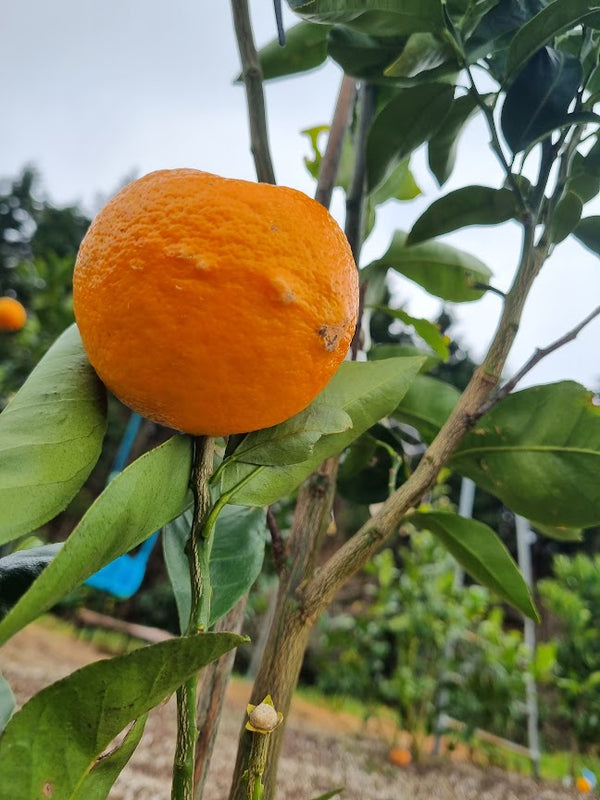
Dweet Tangor Tree
Tax included
Shipping calculated at checkout
Please note: OurEstablished Range, Medium Standard Range (14L pot), andTall Standard Range trees are available for pickup only, as their size exceeds standard courier limits.
The Dweet Tree is not an orange or a mandarin, rather it is a tangor, which is a cross (hybrid) between a tangerine and an orange. Dweet Tangor trees were developed in California in the 1930s and have since become a popular variety in many parts of the world. Dweet fruits are larger than most mandarins but smaller than most sweet oranges, typically weighing around 150-200 grams.
The flesh is sweet and juicy, with a complex and balanced taste, combining the sweetness of an orange with the tanginess of a mandarin. The rind of the Dweet fruit is thin, smooth, and loose with a vibrant reddish-orange hue when ripe. Dweet Tangor Trees are large highly productive trees which looks attractive when laden with ripe fruit. Like other citrus fruits, Dweet fruit are rich in vitamins and minerals, making them a healthy and refreshing treat.
For optimum growth, feed your Dweet Tangor tree in spring and autumn with citrus fertiliser, and or compost or fish fertiliser. Ensure diseased branches are removed and prune for shape and size in late winter.
|
Names |
Dweet, Dweet Tangor, Temple Dweets, Honey Tangerines, Temple Orange, Citrus reticulata x sinensis 'Tangor Dweet' |
|
Origin |
California USA |
|
Mature Size |
2.5 x 2m |
|
Foliage |
Dark green with creamy white flowers |
|
Soil |
Grows best in rich, well-drained soil. Water regularly in hot dry periods. |
|
Position |
Best grown in a warm, sunny aspect, protected from extreme winds and frost when young. |
|
Flavour |
Sweet and tangy. Very juicy. |
|
Fruiting |
The fruit typically ripens in late winter to early spring, providing a delicious citrus treat during the colder months. |
|
Fruit Uses |
Excellent eating and juicing. Can be used in cooking and baking. |





